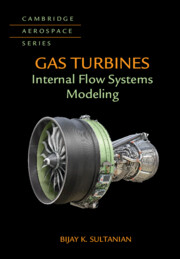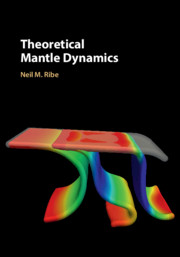3653 results in ebooks in fluid mechanics
8 - Energy conservation in the 3D Euler equations on T2 × R+
-
- Book:
- Partial Differential Equations in Fluid Mechanics
- Published online:
- 15 August 2019
- Print publication:
- 27 September 2018, pp 224-251
-
- Chapter
- Export citation
6 - Leray’s fundamental work on the Navier–Stokes equations: a modern review of “Sur le mouvement d’un liquide visqueux emplissant l’espace”
-
- Book:
- Partial Differential Equations in Fluid Mechanics
- Published online:
- 15 August 2019
- Print publication:
- 27 September 2018, pp 113-203
-
- Chapter
- Export citation
Preface
-
- Book:
- Partial Differential Equations in Fluid Mechanics
- Published online:
- 15 August 2019
- Print publication:
- 27 September 2018, pp xi-xii
-
- Chapter
- Export citation
10 - A direct approach to Gevrey regularity on the half-space
-
- Book:
- Partial Differential Equations in Fluid Mechanics
- Published online:
- 15 August 2019
- Print publication:
- 27 September 2018, pp 268-288
-
- Chapter
- Export citation

Gas Turbines
- Internal Flow Systems Modeling
-
- Published online:
- 25 September 2018
- Print publication:
- 13 September 2018

Theoretical Mantle Dynamics
-
- Published online:
- 20 September 2018
- Print publication:
- 04 October 2018
Appendix F - Solution of an Overdetermined System of Linear Algebraic Equations
-
- Book:
- Gas Turbines
- Published online:
- 25 September 2018
- Print publication:
- 13 September 2018, pp 340-346
-
- Chapter
- Export citation
frontmatter
-
- Book:
- Microhydrodynamics, Brownian Motion, and Complex Fluids
- Published online:
- 27 August 2018
- Print publication:
- 13 September 2018, pp i-iv
-
- Chapter
- Export citation
5 - First Effects of Inertia
-
- Book:
- Microhydrodynamics, Brownian Motion, and Complex Fluids
- Published online:
- 27 August 2018
- Print publication:
- 13 September 2018, pp 104-113
-
- Chapter
- Export citation
9 - Rheology and Viscoelastic Flow Phenomena
-
- Book:
- Microhydrodynamics, Brownian Motion, and Complex Fluids
- Published online:
- 27 August 2018
- Print publication:
- 13 September 2018, pp 201-236
-
- Chapter
- Export citation
7 - Stochastic Differential Equations
-
- Book:
- Microhydrodynamics, Brownian Motion, and Complex Fluids
- Published online:
- 27 August 2018
- Print publication:
- 13 September 2018, pp 139-169
-
- Chapter
- Export citation
Appendix C - Transient Heat Transfer in a Rotor Disk
-
- Book:
- Gas Turbines
- Published online:
- 25 September 2018
- Print publication:
- 13 September 2018, pp 323-333
-
- Chapter
- Export citation
6 - Thermal Fluctuations and Brownian Motion
-
- Book:
- Microhydrodynamics, Brownian Motion, and Complex Fluids
- Published online:
- 27 August 2018
- Print publication:
- 13 September 2018, pp 114-138
-
- Chapter
- Export citation
Copyright page
-
- Book:
- Gas Turbines
- Published online:
- 25 September 2018
- Print publication:
- 13 September 2018, pp iv-iv
-
- Chapter
- Export citation
4 - Fundamental Solutions for Bounded Geometries
-
- Book:
- Microhydrodynamics, Brownian Motion, and Complex Fluids
- Published online:
- 27 August 2018
- Print publication:
- 13 September 2018, pp 90-103
-
- Chapter
- Export citation
Appendices
-
- Book:
- Gas Turbines
- Published online:
- 25 September 2018
- Print publication:
- 13 September 2018, pp 317-346
-
- Chapter
- Export citation
Contents
-
- Book:
- Gas Turbines
- Published online:
- 25 September 2018
- Print publication:
- 13 September 2018, pp vii-x
-
- Chapter
- Export citation
Acknowledgments
-
- Book:
- Gas Turbines
- Published online:
- 25 September 2018
- Print publication:
- 13 September 2018, pp xv-xvi
-
- Chapter
- Export citation
About the Author
-
- Book:
- Gas Turbines
- Published online:
- 25 September 2018
- Print publication:
- 13 September 2018, pp xvii-xviii
-
- Chapter
- Export citation
Contents
-
- Book:
- Microhydrodynamics, Brownian Motion, and Complex Fluids
- Published online:
- 27 August 2018
- Print publication:
- 13 September 2018, pp vii-x
-
- Chapter
- Export citation
